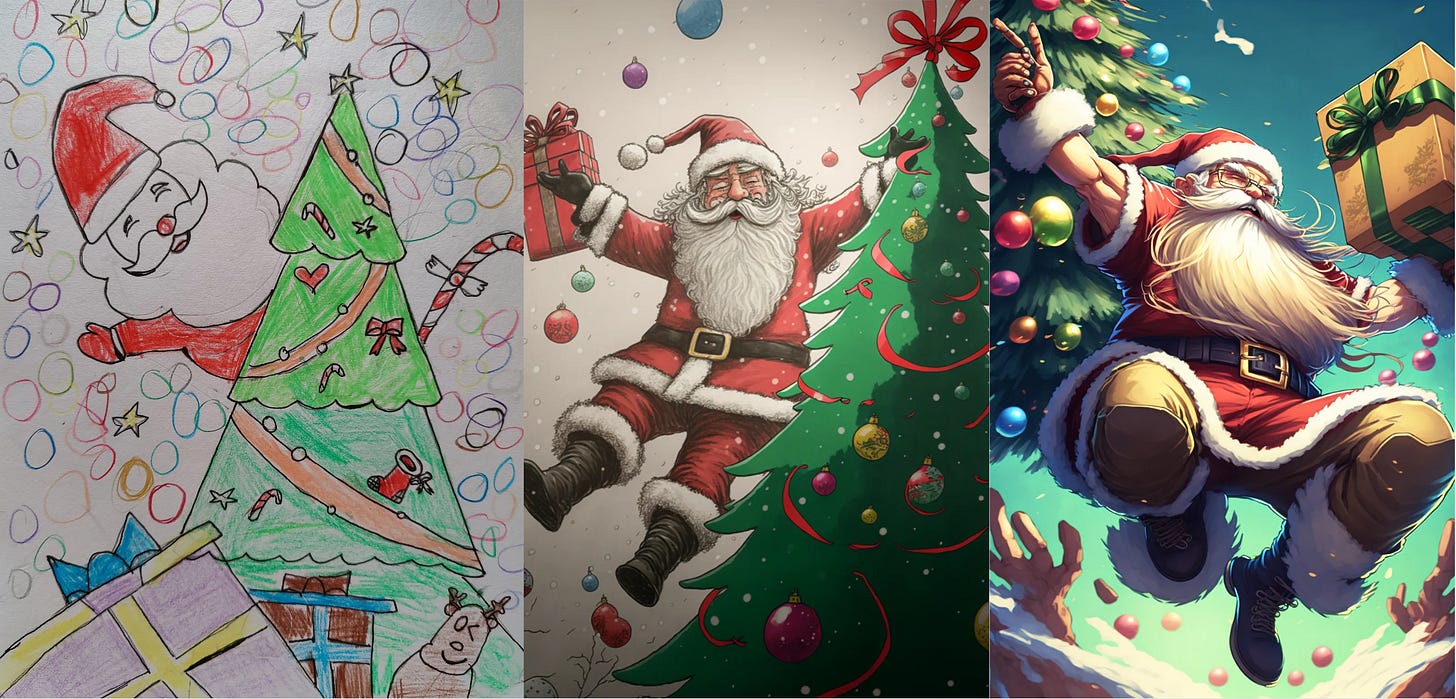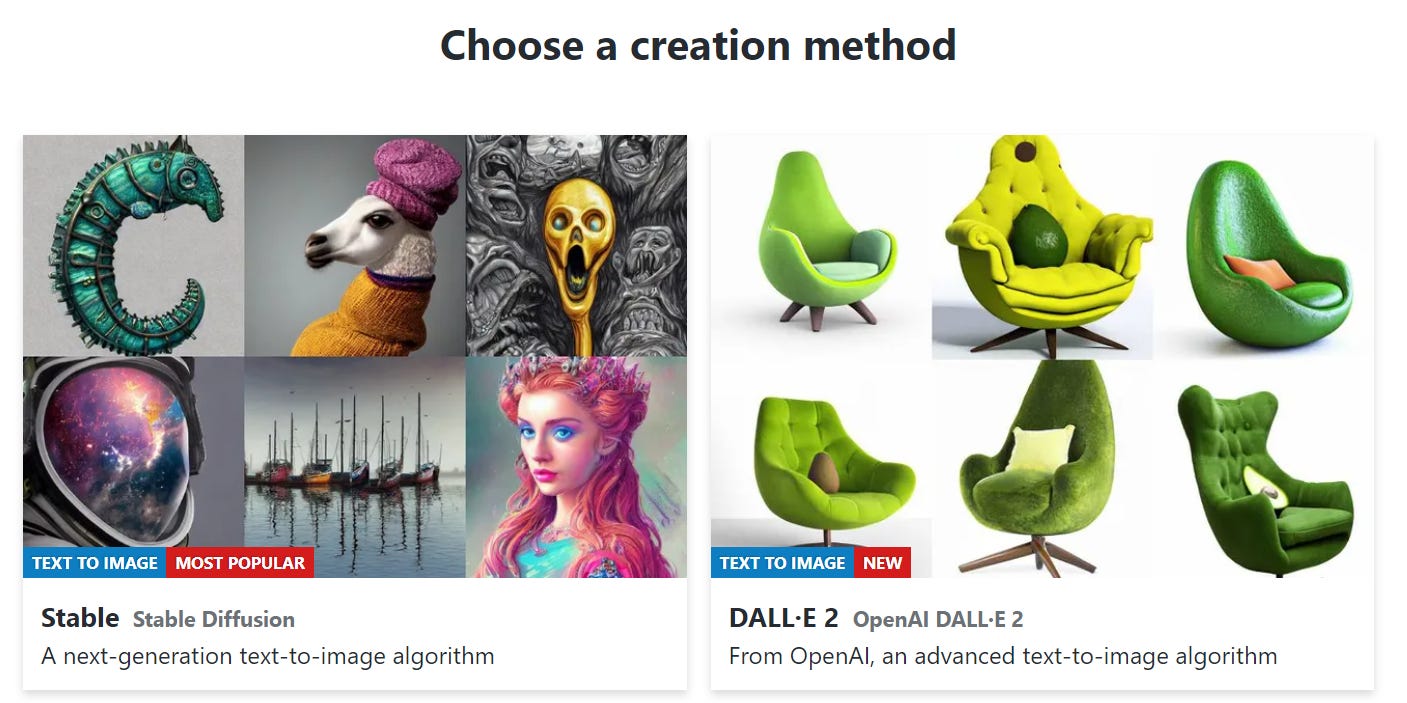4 Ways to Create and Use AI Art in Your Lessons
And how to get started!
Have you considered generating and using AI art in your lessons?
Using simple text prompts, AI can create beautiful, interesting images for your students to use. You can even 'feed' your students' art to the AI, which will enhance and customise their images!
It can save you time searching for images online, engage students, and be fun for all of you. I want to share three ways to use AI art in your teaching (and how to get started).
For all of the following examples, I'll be using an AI art generator called 'Midjourney' (but more on how to get started later).
1. Create Fascinating Images
Never spend hours looking online again.
Time magically disappears when you're searching for just the right pictures to use in class, and even after spending ages looking, you're left with pictures you're not happy with.
For example, you're looking for a picture of a robot riding a unicycle. Instead of spending hours looking, you type in 'cute monster riding a bike' into an AI text-to-image generator. It generates four images, and then you can choose which one you like and 'upscale' it (turn it into a higher-resolution image), like this:
Or, you can choose to create variations of an image or click to try the whole prompt again. You might decide that you need a treasure map, type in ‘treasure map’, and voila! A treasure map appears:
2. Enhancing Student Artwork
Now for something really interesting!
You can take your students' artwork, give it to the AI with a description of what you'd like it to look like, and it will transform it!
An example: the image on the left can be transformed into the middle or right-hand images with just a few words!
3. Putting Yourself (or students) into Artwork
How about putting yourself or your students into AI art?
You can turn yourself into anything you want! You can upload a picture of yourself or your students
The potential here is to create stories, or comics, with you or your students. Here’s a picture of me, transformed into Santa Claus’ helper, and a pirate:
4. Use as a catalyst for discussion
For older or more advanced classes, you can use all of these as a catalyst for creative exercises or discussions.
You could:
Use an image as a prompt for a creative writing exercise.
Ask students how AI-generated art compares to human-made art and what implications this has for the future of creativity and art.
Use AI-generated art as a way to introduce your students to new styles and forms of art. Show them a variety of AI-generated art, and ask them to discuss the different styles, techniques, and themes that they see.
Use AI-generated art as a way to teach your students about the capabilities and limitations of AI. Ask them to consider how AI algorithms create art and how they might be improved.
Overall, using AI-generated art in your teaching can be a great way to engage your students in discussions about creativity, technology, and the future of art.
How to Get Started
A few solutions, depending on how tech-savvy you are. These go from easiest to most challenging.
Option 1: NightCafe
An easy way to get started, go to NightCafe. Click ‘start creating’ and choose either ‘Stable Diffusion’ or ‘DALL-E 2’ (I’d go with Stable Diffusion)
Then type in what you’d like to generate and the style you’d like it generated in:
NightCafe will allow you five free images before asking you to pay for more credits.
Option 2: Midjourney
I use Midjourney, and if you have a little more time to get started, I’d recommend this method, as it’s the most versatile and powerful. It uses Discord, a messaging app, to input prompts and settings.
Here's a great tutorial to get set up.
Midjourney will give you around 25 images (depending on if you upscale the quality of images) before asking you to buy more credits.
Other Methods
There are other ways - Stable Diffusion is free but needs a bit of technical knowledge to download and install on your computer (and needs a good graphics card). Find out more here.
Keep an eye out for new platforms, as there are a growing number being created every month. It’s an area that’s exploding with creativity!
Final Words
Have fun and experiment, but be careful because it is addictive - I’ve lost hours generating images and experimenting. My mind is blown at how good these images are, and I can’t wait to see how AI art progresses in the near future.
Good luck, and have fun!
If you liked this article, you’ll love my books:
📝 Lesson Planning for Language Teachers - Plan better, faster, and stress-free (4.5⭐, 175 ratings).
👩🎓 Essential Classroom Management - Develop calm students and a classroom full of learning (4.5⭐, 33 ratings).
🏰 Storytelling for Language Teachers - Use the power of storytelling to transform your lessons (4.5⭐, 11 ratings).
🤖 ChatGPT for Language Teachers - AI prompts and techniques for language teachers (4.5⭐, 10 ratings).
💭 Reflective Teaching Practice Journal - Improve your teaching in five minutes daily (4.5⭐, 16 ratings).
📄 PDF versions available here.











Even as a young woman who is used to this, I cant get over the fact that your talking about making your students artwork, "better" using ai. Nothing replaces human art, and I would be so upset if my teacher were to use ai to "Fix" my art and, "Make it better". Teach children to be creative and improve, not for ai to do it for them. As a artist, It makes me mad that someone could use ai to make CHILDRENS art, "better". Teach children to develop skills. Stop teaching them to rely on AI.
thx for the article. how could lecturers at college/ university use image generators ?